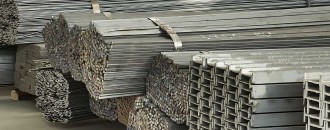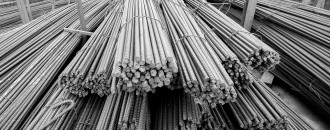
Centre’s stand on imports irks steel manufacturers
The Dollar Business Bureau  The Government of India not acting against growing steel dumping into the country has been irking the Indian domestic steel makers since a long time. Even after facing strong demands from the domestic steel makers to act against steel imports into the country, the Indian government is still mulling on whether to impose ban on steel imports from China or not. According to reports, steel manufacturers were not happy with a reply given by the Indian Minister of State for Steel and Mines, Vishnu Deo Sai on Wednesday, to a question in Rajya Sabha, on whether the Indian government was contemplating a ban on steel imports from China to give respite to Indian producers. However, the Minister also said to have added that the government ensures only quality steel imports into the country and that the government’s role was limited to just be a facilitator in the growth of the steel industry, in view of the industry coming under a de-regulated market. The government’s role lies in laying the policies, but the decisions regarding enhancement of production capacity is taken by the entrepreneurs based on assessment of prevailing and expected market/economic conditions, the Minister added. Earlier in this week, in a written reply to Lok Sabha, the Minister had said that India's steel imports from China during April-January period of current fiscal has increased to 2.9 MT against 1.08 MT in the entire 2013-14. The recent statements made by the Minister gains importance in view of the demands from domestic steel producers of India, urging the Government of India to strongly act against the growing imports of steel into the country. Earlier in February 2015, the domestic steel importers had asked the government to implement increase import duties or implement anti-dumping policies, in order to curb the growing steel imports. The domestic steel producers made these demands in view of a growing demand for steel as a result of growing infrastructure projects and don’t want their production left behind.
The Government of India not acting against growing steel dumping into the country has been irking the Indian domestic steel makers since a long time. Even after facing strong demands from the domestic steel makers to act against steel imports into the country, the Indian government is still mulling on whether to impose ban on steel imports from China or not. According to reports, steel manufacturers were not happy with a reply given by the Indian Minister of State for Steel and Mines, Vishnu Deo Sai on Wednesday, to a question in Rajya Sabha, on whether the Indian government was contemplating a ban on steel imports from China to give respite to Indian producers. However, the Minister also said to have added that the government ensures only quality steel imports into the country and that the government’s role was limited to just be a facilitator in the growth of the steel industry, in view of the industry coming under a de-regulated market. The government’s role lies in laying the policies, but the decisions regarding enhancement of production capacity is taken by the entrepreneurs based on assessment of prevailing and expected market/economic conditions, the Minister added. Earlier in this week, in a written reply to Lok Sabha, the Minister had said that India's steel imports from China during April-January period of current fiscal has increased to 2.9 MT against 1.08 MT in the entire 2013-14. The recent statements made by the Minister gains importance in view of the demands from domestic steel producers of India, urging the Government of India to strongly act against the growing imports of steel into the country. Earlier in February 2015, the domestic steel importers had asked the government to implement increase import duties or implement anti-dumping policies, in order to curb the growing steel imports. The domestic steel producers made these demands in view of a growing demand for steel as a result of growing infrastructure projects and don’t want their production left behind.
This article was published on March 11, 2015.






 to success.
to success.